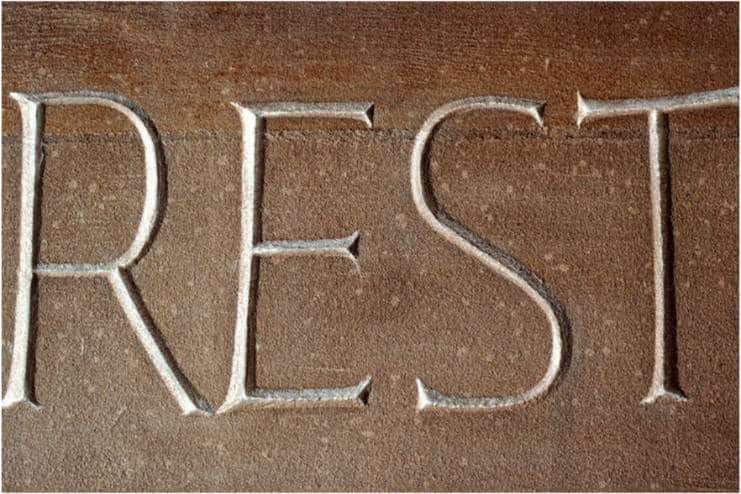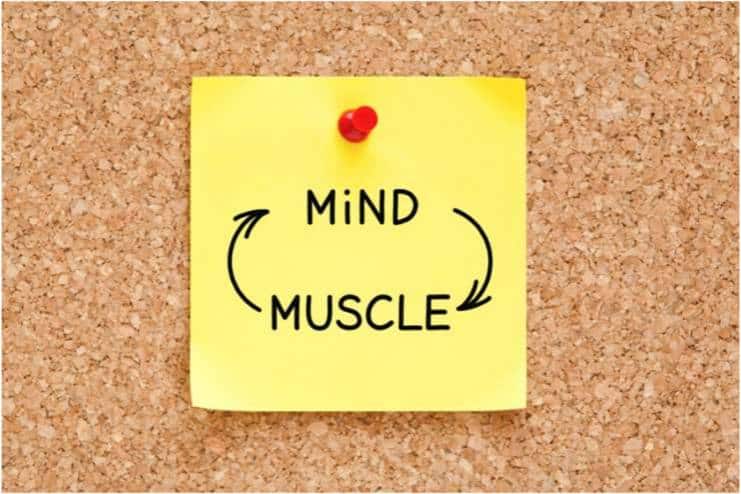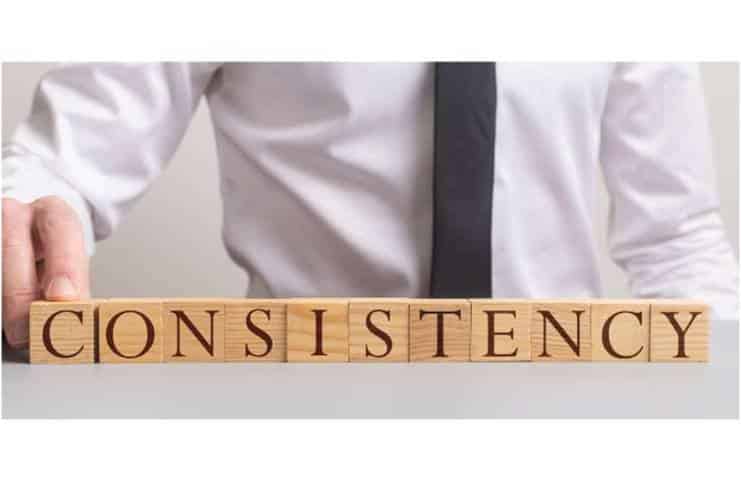Affiliate Disclaimer
Some links in this article are affiliate links. We may earn a small commission if you make a purchase through these links, at no extra cost to you. We only recommend products we find useful to our readersThere’s a common misperception that muscle growth is an uphill battle best left to the younger generation as people get closer to 40. But nothing could be further from the reality than this idea. Developing muscle after 40 is feasible and rewarding with the correct attitude and strategy.
To dispel the fallacies regarding muscle growth in the 40+ age range, we hope to illuminate the reality that aging is not a barrier to fitness but rather a new chapter in one’s journey. Our main objective is to give men over 40 valuable tactics that will enable them to break through preconceptions, successfully gain muscle, and adopt a fit and healthy lifestyle.
Understanding Muscle Building After 40
Physiology and Aging
Muscle physiology and metabolism naturally and gradually change when people enter their fourth decade of life. Hormonal levels fluctuate with age, most notably in synthesizing growth hormone and testosterone, essential for muscle development. In addition, there appears to be a decline in the synthesis of muscle proteins, which makes it difficult for those over 40 to gain and maintain muscle mass.
Due to alterations in muscle tissue and typical aging changes in the neurological system, muscles lose some of their tone and contraction power. Even with regular exercise, muscles can lose tone and become inflexible with age. There is a reduction in the synthesis of muscle proteins but minimal alteration in their breakdown. This implies that their ability to repair and replace muscles is probably reduced as people age. This happens when there is a rise in the percentage of body fat mass and insulin resistance.
Notwithstanding these physiological changes, the misconception that muscular growth is impossible after a particular age must be dispelled. Comprehending the nuances of these modifications enables the creation of focused tactics capable of mitigating the impact of aging on muscle growth. For individuals looking to gain muscle after 40, a customized diet, resistance training, and astute supplementation become essential tools. By recognizing and treating these physiological changes, people can take a journey that not only overcomes the constraints imposed by aging but also promotes a renewed sense of energy and strength.
Effective Muscle-Building Strategies
1. Targeted Resistance Training

Targeted resistance training becomes an essential tool for fitness lovers searching for optimal muscle gain beyond 40. This method emphasizes exercises that target specific muscles and complex motions, carefully planned to enhance muscular growth and induce hypertrophy.
Compound movements in resistance training, which employs weights or resistance bands, work for several muscle groups simultaneously. Exercises that work many muscle fibers, like deadlifts, squats, and bench presses, are perfect for building general strength and bulk. Combining these compound motions with muscle-specific exercises is recommended to refine the emphasis and target specific muscle groups to achieve a well-rounded and balanced body.
The key to achieving maximum hypertrophy is carefully balancing isolation and complex exercises. While isolation exercises offer precision and aid in refining particular muscle groups, compound exercises lay the groundwork for strength and overall muscle growth. You can reach your maximum muscle-building potential by including both into your workout routine and emphasizing progressive overload.
Precise workout execution maximizes muscle engagement while reducing the chance of damage. Form is crucial, especially for people over 40 whose bodies may be more prone to strains and accidents. Sustained growth also requires a progressive increase in resistance and intensity.
2. Optimal Nutrition

Nutrition plays a significant role in the quest for long-term strength and vitality in muscle building beyond forty. A carefully thought-out nutritional plan is essential for promoting muscle growth and recovery and fueling the body.
Protein, sometimes called the “building block” of muscles, is crucial for people over 40 in terms of diet. Consuming enough protein is essential for synthesizing and repairing muscles, particularly after resistance training. Lean protein foods such as fish, chicken, legumes, and dairy products supply the amino acids required for maximum muscle growth. The body cannot produce new muscle tissue on its own. Your body needs the proper nutrition to build muscle if you want to see increases.
This implies that gaining muscle requires a specific combination of foods and amounts. Without sufficient nutrition, particularly protein, lifting weights and engaging in strength training can result in loss of muscle tissue.
Hydration is a necessary but frequently disregarded component of the best muscle growth diet. Water is essential for temperature regulation, joint lubrication, and the delivery of nutrients—all of which are critical steps in gaining and preserving muscle growth.
Minerals and vitamins are essential for many physiological functions, affecting muscle function. It becomes necessary to customize supplements to meet the unique demands of men over 40, such as calcium, vitamin D, etc., for healthy bones.
3. Rest and Recovery

In the world of post-40 muscular gain, rest and recovery—often overlooked yet vital—take center stage. Realizing that muscle growth happens not only during high-intensity workouts but also during the recovery times after that is essential to maximizing the benefits of an exercise program designed for adults over forty.
Lack of sleep inhibits muscle growth, reduces muscular endurance and strength, delays muscle recovery, and increases the risk of injury. To guarantee the best possible muscle repair, it is advised to get at least 7-9 hours of sleep per night.
Muscles can become more prominent and substantial over time by releasing more protein-building amino acids into the bloodstream during sleep. Rapid eye movement (REM) sleep promotes the production of growth hormones, which aid in muscle regeneration. While you sleep, your body releases various healing compounds that maintain the health of your muscles.
Sleep aids in the healing process by lowering cortisol levels. Contrary to growth hormones, cortisol causes the body to break down tissues to produce energy. Hence, sleep facilitates growth hormones’ ability to repair damaged tissues more fully by reducing cortisol levels.
Recovery plans for aging athletes must be carefully considered. Including low-impact mobility activities, like yoga or swimming, can help reduce muscular stiffness and increase flexibility. Investing in self-myofascial release methods, such as foam rolling, also helps to decrease muscular tension and enhance blood circulation.
4. Hormonal Balance

Men’s hormones naturally change as they approach 40, bringing particular chances and problems regarding muscle gain. It becomes essential for anyone looking for efficient and long-lasting muscle growth to comprehend the effects of these hormonal shifts and implement techniques to maximize them.
Men’s testosterone levels and muscular mass typically begin to decrease with age. Some men may start to experience signs of low testosterone, like weariness or hair loss. However, men might not be aware of the source of their symptoms because standard physicals typically do not test for testosterone. Additionally, there is a general lack of understanding regarding testosterone. The majority of individuals are aware that males have this hormone.
However, many may need to be made aware of its precise functions. Exercise physiologist Matthew Accetta, MS, ACSM-CEP, CSCS*D, CSPS, says testosterone “helps build muscle by generating proteins, which then increases muscle strength.” Numerous hormones, such as glucocorticoids, testosterone, thyroid hormones, and growth hormone (GH), significantly impact the development and function of skeletal muscle.
Resistance training is an essential part of naturally maximizing hormone levels. Regularly performing demanding activities, particularly compound exercises, increases the synthesis of growth hormone and testosterone. Furthermore, adding high-intensity interval training (HIIT) to the exercise program helps to improve hormone balance.
Lifestyle adjustments, in addition to diet and exercise, favorably impact hormone balance. Chronic stress can upset hormonal balance, so it’s essential to manage stress with techniques like meditation and getting enough sleep. Maintaining hormonal health also involves limiting alcohol intake and avoiding sugar overload.
5. Cardiovascular Conditioning

A balanced, long-lasting exercise program for men over 40 must prioritize cardiovascular conditioning and muscle gain. Despite the common misperception that cardiovascular exercise could impede muscle growth, it is essential for maintaining general health and increasing the effectiveness of muscle-building exercises.
Cardiovascular exercise becomes increasingly important as you age for a variety of reasons. Aerobic exercise lowers the risk of chronic diseases, increases stamina, and supports heart health. Cardio for men over 40 can help you maintain physical fitness and lose weight by increasing your capacity to burn calories and gain lean muscle mass.
Many guys detest cardio because they associate it with staring at a wall while working on a treadmill or going on endless walks. Cardiovascular exercise, or “cardio,” is essential for strengthening the heart, increasing stamina, and encouraging the body to use oxygen efficiently. In addition to these cardiovascular advantages, including cardio in a workout program helps with weight control and improves recovery from resistance training sessions.
Cardiovascular conditioning guarantees that the heart and lungs function well, preserving muscle gains while supplying the stamina required for more prolonged and severe resistance training sessions. The synergy between cardiovascular and strength training, which optimizes cardiovascular and muscular health, fosters a well-rounded approach to fitness.
Men over 40 should balance joint-friendly activities and efficacy in their tailored cardio regimens. Exercises that don’t strain joints, like swimming, cycling, and brisk walking, are excellent for cardiovascular conditioning.
6. Mind-Muscle Connection

The mind-muscle link is often disregarded yet is crucial when trying to gain muscle efficiently and targeted. This subtle training method creates a deliberate and mindful connection between the mind and muscles, resulting in more effective and profound workouts.
Studies reveal that visualizing your muscles contracting and exercising fires the muscle fibers even more than executing the workout without concentration and focus. Put another way, you will increase your strength and memory as you concentrate on the targeted muscle throughout an exercise.
When we direct our attention and mental state toward movement, the neurons in our brain activate and transmit messages to our muscle fibers to contract. This enhances both the quality of movement and the force of contraction.
For those over forty, the mind-muscle connection is revolutionary since it increases the efficiency of every workout by guaranteeing that the targeted muscle areas are fully activated. Better muscle recruitment, activation, and stimulation during exercise are made possible by this increased awareness, which enhances strength increases and muscle hypertrophy.
By developing the mind-muscle link, people can perform deliberate, controlled motions that go beyond simple repetition. Concentrating on particular muscle groups makes it possible to engage them more deeply, inhibiting the use of momentum and guaranteeing that the targeted muscles receive the majority of the burden.
7. Injury Prevention and Mobility

Preventing injuries and maintaining mobility are critical factors for older athletes seeking a long-lasting and successful fitness journey. Considering the unique challenges of aging, it is essential to take precautions to protect against damage and maintain mobility to continue physical activity. Elderly persons may experience a downward spiral of inactivity and decline brought on by falls and injuries, which may bring them near to or below the key “thresholds” of performance required for daily tasks.
After 40, injury avoidance becomes increasingly crucial in muscle training since the body is more prone to strains and stress. Making injury prevention a priority guarantees continuous improvement and protects against setbacks obstructing long-term fitness objectives. Mobility is also crucial for overall well-being, functionality, and joint health. Flexibility and range of motion naturally reduce with age. Therefore, it’s critical to adopt techniques that prevent these losses.
Active warm-up exercises are essential for senior athletes before workouts. Various motion exercises and gentle stretches prepare muscles and joints for the demands of more strenuous activity, reducing the risk of strains and tears.
Yoga and Pilates are great ways to improve joint health and increase flexibility.
An effective strategy for preventing injuries is strength training that strongly emphasizes appropriate form.
8. Consistency and Adaptability

The mutually beneficial relationship between consistency and adaptation becomes crucial for long-term growth and general health in post-40 muscular gain. Establishing a solid regimen and embracing adaptability in workouts and nutrition strengthens an excellent fitness journey.
Keeping up a regular exercise schedule improves performance by preventing muscle tension. Additionally, you’re more prone to fatigue when you exercise inconsistently. Fatigue is one of the leading causes of both acute injuries and overuse injuries.
One of the most crucial elements to reaching your fitness objectives is consistency. Regular exercise raises your fitness level, enhances your general health, and improves your emotional well-being.
Reliability is the cornerstone around which actual development is constructed. Consistent and dedicated participation in exercise and diet is essential to gaining muscle. It does this by supplying a steady stimulus for adaptation, which fosters the physiological conditions necessary for muscular growth. Regular exercise—resistance training or cardiovascular exercises—contributes to long-term metabolic activity and cumulative strength increases. Similarly, eating a diet rich in nutrients and well-balanced nourishes the body and guarantees a continuous supply of the building blocks needed for muscle growth and repair.
9. Seeking Professional Guidance

Seeking the advice of fitness experts or trainers who specialize in the unique requirements of senior athletes is quite beneficial while attempting to gain muscle after 40. While self-motivation and perseverance are admirable, having an experienced professional guide can improve the efficacy of your fitness journey by ensuring that your individualized tactics align with your unique talents and goals.
Even in tiny doses, exercise can improve the quality of life for sedentary people or those with chronic illnesses. Studies demonstrate that even a modest amount of exercise can enhance life satisfaction and foster positive behaviors.
Hiring a trainer or fitness expert with experience working with senior athletes is a proactive way to achieve the best outcomes. These experts can customize exercises to target specific issues and objectives because they have a sophisticated awareness of the physiological changes that coincide with aging.
Conclusion
Using the above tactics is a road map for gaining muscle after 40. These ten practical tips offer a comprehensive strategy for men over 40, from comprehending the subtleties of physiology to emphasizing sleep, diet, and focused workouts. Accept consistency and flexibility, and when necessary, seek expert advice. By implementing these ideas, you start a transformational path to a more muscular, fit body.
References
- https://www.ncbi.nlm.nih.gov/pmc/articles/PMC3874224/
- https://www.betterhealth.vic.gov.au/health/conditionsandtreatments/ageing-muscles-bones-and-joints
- https://www.mountsinai.org/health-library/special-topic/aging-changes-in-the-bones-muscles-joints
- https://trifocusfitnessacademy.co.za/personal-fitness-training-blog/the-role-of-compound-exercises-in-muscle-hypertrophy/
- https://iamherbalifenutrition.com/fitness/protein-to-build-muscle/
- https://www.ncbi.nlm.nih.gov/pmc/articles/PMC6566799/
- https://www.prestigefitnessaz.com/the-importance-of-sleep-and-recovery-for-fitness-enhancing-performance-and-wellness
- https://www.wm.edu/offices/sportsmedicine/_documents/sleep-manual
- https://www.hss.edu/article_muscle-mass-testosterone.asp
- https://balancemyhormones.co.uk/testosterone-and-muscle-mass/
- https://www.fitfatherproject.com/cardio-for-men-over-40/
- https://www.everydayhealth.com/menopause/know-about-midlife-exercise-needs/
- https://vincegironda.com/the-importance-of-mind-muscle-connection-in-bodybuilding/
- https://propelphysiotherapy.com/exercise/mind-muscle-connection-exercise-program/
- https://pubmed.ncbi.nlm.nih.gov/12535321/
- https://www.lifederive.com/2023/11/why-is-consistency-in-training.html
- https://outlawfitcamp.com/the-importance-of-working-out-with-consistency/
- https://www.nasm.org/continuing-education/fitness-specializations/senior-fitness-specialization
In this Article




















